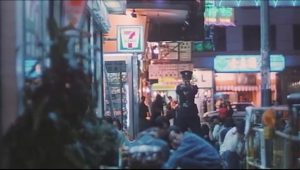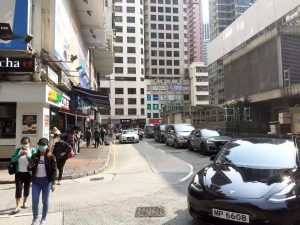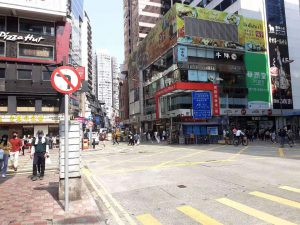YOUNG AND DANGEROUS 1, DIR. ANDREW LAU (1996)
Wan Chai MTR Station Exit A4, Wan Chai, Hong Kong & Causeway Bay Plaza II, Causeway Bay, Hong Kong
Young and Dangerous, a crime film series adapted from comic books series Teddy Boy, presented the dangers that the members of a crime syndicate would face in their lives. Young and Dangerous 1, as the first film in this series, discusses how Chan Ho Nam transformed from a complete nonentity to the chairperson of the syndicate, Hung Hing. During the time, he experienced frame-up, betrayal, and death. However, these incidents did not beat him. Instead, they led him to grow up and understand the significance of being virtuous and friendship.
The story happened in the 1990s, which was a turbulent time for Hong Kong citizens, due to political issues. With confusion and ambivalence, young children tended to join crime syndicates to seek support and protect themselves. Chan Ho Nam and his friend, Chicken Chiu, as ones of these confused teenagers, joined a syndicate and followed Bee. A few years later, due to the conflicts between leaders, Chan Ho Nam fell into another leader Kwan’s trap and left the syndicate humiliatingly.
He opened a bar and his life gradually settled. However, the death of Bee enraged him. He planned to revenge the murder of Bee. With the help from Chicken, Chan Ho Nam led Kwan to an alley and forced him to admit his sins. Kwan managed to escape but got killed by a police officer by Wan Chai MTR Station Exit A4, as shown below.
 Kwan got shot by the police officer.
Kwan got shot by the police officer.
 A view towards the road junction.
A view towards the road junction.
In the film, the place was shown as messy and congested comparing with the clean and wide in reality. This contributes to create a sense of disorder and reflects how turbulent the society was in the 1990s. The numerous signboards shown in the background were shiny and dazzling, which form a huge contrast with the society and people living here. As mentioned before, people formed various crime syndicates for defense. However, to maintain their own profits, those syndicates allowed illegal activities to happen, which created confusion among people. Sex trade, violence, gambling, and drug trade could be seen everywhere. It seems that the place was bright and warm, but it was dark and dirty in fact. Therefore, it is presented this way to portray the social background.
After this scene, Chan Ho Nam was walking on Lockhart Road with his friends, as shown below.
 Chan Ho Nam and his friends returned in triumph.
Chan Ho Nam and his friends returned in triumph.
 View towards Lockhart Road.
View towards Lockhart Road.
The place was crowded and thriving. Different from the previous scene, in this scene, people’s faces could be clearly seen. The big smiles on their faces, together with the colorful signboards at the back (which are significantly fewer in reality), emphasize Chan Ho Nam’s success. Meanwhile, the place was set to be crowded because it illuminates the importance of friendship. All the people following the main lead supported him. Without them, Chan Ho Nam could not revenge on Kwan. Thus, the place is presented this way to emphasize the theme.
Tian Xuemu (3035825057)
It was great that you have summarised the movie in details as Young and Dangerous is one of the well-known film series that constitutes a big part of the triad movie genre in Hong Kong cinema. Regarding the choice of site, I understand that it presented the messiness of a congested Hong Kong. However, it would be wonderful if you could possibly explain the significance of the scene in the movie and why do you think Lockhart Road is picked ? is there any relationship in reality that links Lockhart Road / Causeway Bay / Wanchai with triad culture or underground illegal activities? Is it merely because of the signages which could also be found along Nathan Road then?
Lockhart Road near the Wanchai end is often considered as the red light district of Hong Kong (similar to Portland Street) as well as a downmarket bar district, you may wish to delve a bit into the history of the places you visited in order to understand the choice of site in the movie better.